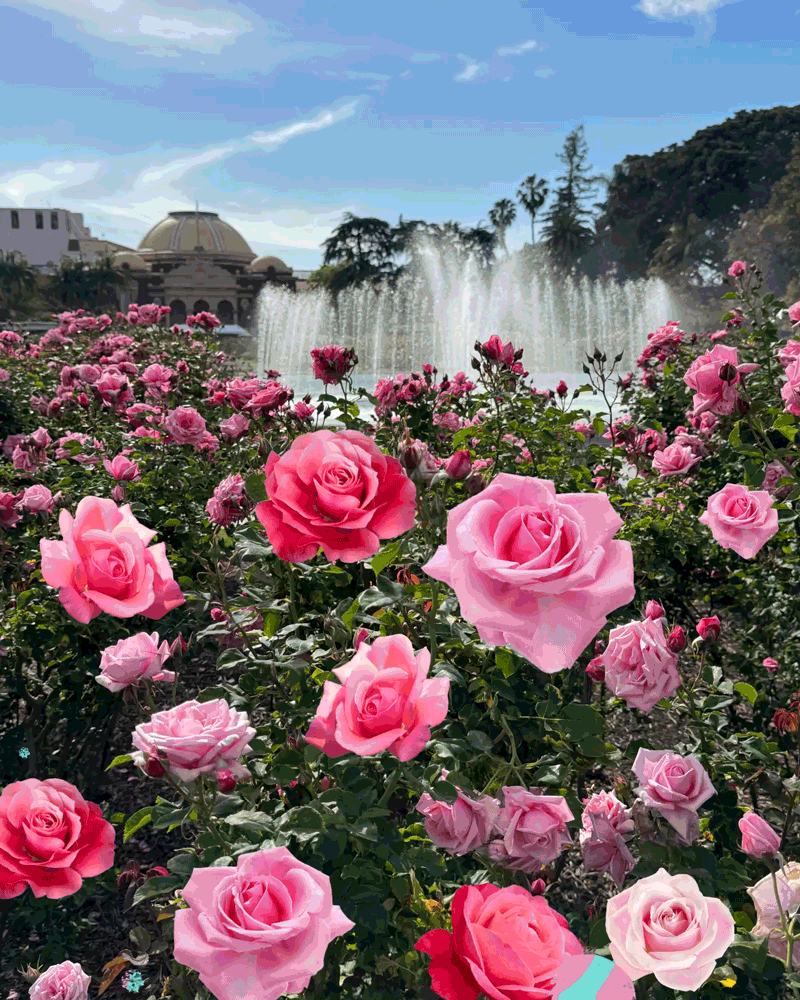How to keep roses healthy during a drought

Southern California may be in the midst of a drought, but that doesn’t mean your roses have to go. “Roses are sustainable,” says Linda McKendry, a Hidden Hills-based garden designer who specializes in rose gardens. “Historically in California, you’ll find old roses in cemeteries where they’ve been surviving for years.”
McKendry and other experts say lack of precipitation will reduce the number of flowers your roses produce this season, but it won’t kill them. Here are their tips for helping your garden roses endure — organically.
Insulate with mulch: Southern California’s rosarians are unanimous in their belief that a layer of mulch protects the root system of your roses.
“Mulch, mulch and mulch some more,” says Tom Carruth, rose curator at the Huntington Library, Art Collections and Botanical Gardens in San Marino and a veteran rose breeder. “A thick application of mulch is an absolute necessity to conserve moisture and cool the plant’s roots and soil.”
The 3,500 roses in the Huntington’s gardens are protected by bark mulch, made on-site from the ground crew’s trimmings. For residential gardens, rose experts suggest several options, including bagged redwood mulch, organic compost, recycled green waste and shredded oak leaf mulch. Mulch should be refreshed annually.
Apply a 2- to 4-inch layer of mulch on top of the soil around your plants, advises Scott Klittich, president of Otto & Sons Nursery in Fillmore, known for its vast rose inventory. Clear away about 6 inches of mulch from the base of the plant.
“You can water and fertilize right through the mulch; as it breaks down, it will release nutrients into your soil,” Klittich says.
Water deep: Reduce the frequency but water longer each time, says Danielle Hahn, owner of Rose Story Farm in Carpinteria, which maintains 25,000 old English and David Austin garden rose shrubs that produce cut flowers for the wedding market. For example, if you typically use 2 gallons per plant twice a week, switch to 3 gallons once a week, she said.
If you have no idea how much water flows from your irrigation system to your roses, try Klittich’s technique. “After you’ve watered really well, stop and wait,” he says. “Don’t do anything until you see the rose wilt and the little buds start to hang their heads. That will give you a baseline. So if it takes 10 days for your roses to wilt, then you know you should water every eight days or so.”
The pros water during the coolest time of the day and regularly check drip irrigation systems to ensure the emitters are functioning. However, drip lines do not deliver enough water to the roots of newly planted roses. “There may already be an irrigation system in place, but when a rose is getting established, I hand-water it — at least for the first year while it’s putting its roots down,” McKendry says.
Hand-watering is a useful strategy for any rose during extended hot spells, Hahn says. “If an individual plant looks stressed, you can always give it a half-gallon of water by hand.”
And don’t worry if you have to leave town and your roses go without water for a few weeks. “When you stop watering, it forces your roses into dormancy. As soon as cooler weather arrives in the fall, they’ll begin to leaf out — and bloom — again,” Hahn says.
Feed naturally: Organic fertilizers are preferred by many experts — for the plants and the health of your soil.
McKendry recommends feeding your roses three times a year: in January after they have been pruned, in late spring to encourage a second flush of blooms and in late summer to encourage autumn flowers.
Hahn suggests that the home gardener select a granular organic rose fertilizer from Dr. Earth, E.B. Stone or Gardener & Bloome, all Southern California manufacturers. “Apply the fertilizer right before watering your plants, so the food is soaked into the root system,” she says.
Treat selectively for pests or diseases: Otto & Sons Nursery still gets customers who want a chemical cure-all for their roses, but it’s seen a trend toward organic practices. “Organic pest control can be as easy as spraying off aphids, spores or fungus with a garden hose,” Klittich says.
If you have an infestation or attack of powdery mildew or rust, it’s possible to selectively treat a plant with horticultural oil or soap-based sprays, which are natural treatments, Klittich adds.
Hahn worries that any insecticide, even an organic one, has the potential to kill good predators as well as the bad ones. Instead, she suggests stripping all diseased or infested leaves and letting the plant go dormant until it leafs out again. “Rake and dispose of all damaged leaves — and do not put them into the compost where they might get mulched back into your garden.”
Give it a rest: The bottom line, say the experts, is that you can’t kill a rose from neglect or lack of water. “Roses are a lot tougher than people think, and you may have to accept fewer blooms in order to get your roses through the drought,” says Lance Walheim, a Bayer Advanced gardening expert and author of “Roses for Dummies.”






